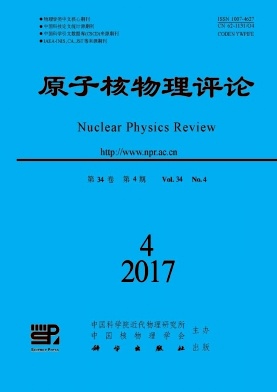|
[1]
|
WASON M S, COLON J, DAS S, et al. Nanomedicine Nanotechnology Biology & Medicine, 2013, 9(4):558. |
|
[2]
|
LAWRENCE Y R, Li X A, EI N I, et al. International Journal of Radiation Oncology Biology Physics, 2010, 76(Suppl 3):S20. |
|
[3]
|
SHA K, WINN L M. Birth Defects Research Part B Developmental & Reproductive Toxicology, 2010, 89(2):124. |
|
[4]
|
ENTIN-MEER M, REPHAELI A, YANG X, et al. Molecular cancer therapeutics, 2005, 4(12):1952. |
|
[5]
|
MUNSHI A, KURLAND J F, NISHIKAWA T, et al. Clinical Cancer Research, 2005, 11(13):4912. |
|
[6]
|
JUNG M, VELENA A, CHEN B, et al. Radiation Research, 2005, 163(5):488. |
|
[7]
|
ZHANG Y, JUNG M, DRITSCHILO A, et al. Radiation Research, 2004, 161(6):667. |
|
[8]
|
VIGUSHIN D M, ALI S, PACE P E, et al. Clinical Cancer Research, 2001, 7(4):971. |
|
[9]
|
YOSHIDA M, HOSHIKAWA Y, KOSEKI K, et al. Journal of Antibiotics, 1990, 43(9):1101. |
|
[10]
|
WHARTON W, SAVELL J, CRESS W D, et al. Journal of Biological Chemistry, 2000, 275(43):33981. |
|
[11]
|
KIM J H, KIM I H, SHIN J H, et al. Cancer Research and Treatment:Official Journal of Korean Cancer Association, 2013, 45(4):334. |
|
[12]
|
ZHANG F, ZHANG T, TENG Z H, et al. Cancer biology & therapy, 2009, 8(9):823. |
|
[13]
|
HSIAO K Y, MIZZEN C A. Journal of Molecular Cell Biology, 2013, 5(3):157. |
|
[14]
|
ZILBERMAN Y, BALLESTREM C, CARRAMUSA L, et al. Journal of Cell Science, 2009, 122(19):3531. |
|
[15]
|
MATSUYAMA A, SHIMAZU T, SUMIDA Y, et al. EMBO journal, 2002, 21(24):6820. |
|
[16]
|
GASPER R, MIJATOVIC T, BÉNARD A, et al. Biochimica et Biophysica Acta (BBA)-Molecular Basis of Disease, 2010, 1802(11):1087. |
|
[17]
|
ZHANG F, HUANG Q, YAN J, et al. Analytical chemistry, 2015, 87(4):2511. |
|
[18]
|
HILL I R, LEVIN I W. Journal of Chemical Physics, 1979, 70(2):842. |
|
[19]
|
MICHAELIAN K H, ZHANG S L, HALL R H, et al. Canadian Journal of Analytical Sciences & Spectroscopy, 2001, 46(1):10. |
|
[20]
|
XIA Shouxuan. Radiobiology[M]. Beijing:Military Medical Science Press, 1998:243. (in Chinese) (夏寿萱. 放射生物学[M]. 北京:军事医学科学出版社, 1998:243.) |
|
[21]
|
WARTERS R L, NEWTON G L, OLIVE P L, et al. Radiation Research, 1999, 151:354. |
|
[22]
|
DOUKI T, BRETONNIERE Y, CADET J. Radiation Research, 2000, 153(1):29. |
|
[23]
|
TAKATA H, HANAFUSA T, MORI T, et al. PloS one, 2013, 8(10):e75622. |
|
[24]
|
STRAHL B D, ALLIS C D. Nature, 2000, 403(6765):41. |
|
[25]
|
GREGORY P D, WAGNER K, HÖRZ W. Experimental Cell Research, 2001, 265(2):195. |
|
[26]
|
SHUBASSI G, ROBERT T, VANOLI F, et al. Cancer Research, 2012, 72(6):1332. |
|
[27]
|
CHAUHAN D, TIAN Z, ZHOU B, et al. Clinical Cancer Research, 2011, 17(16):5311. |
|
[28]
|
CHINNAIYAN P, VALLABHANENI G, ARMSTRONG E, et al. International Journal of Radiation Oncology Biology Physics, 2005, 62(1):223. |
|
[29]
|
SHOJI M, NINOMIYA I, MAKINO I, et al. International Journal of Oncology, 2012, 40(6):2140. |
|
[30]
|
SOUTOGLOU E, DORN J F, SENGUPTA K, et al. Nature Cell Biology, 2007, 9(6):675. |
|
[31]
|
MILLER K M, TJEERTES J V, COATES J, et al. Nat Struct Mol Biol, 2010, 17(9):1144. |






 甘公网安备 62010202000723号
甘公网安备 62010202000723号 DownLoad:
DownLoad: